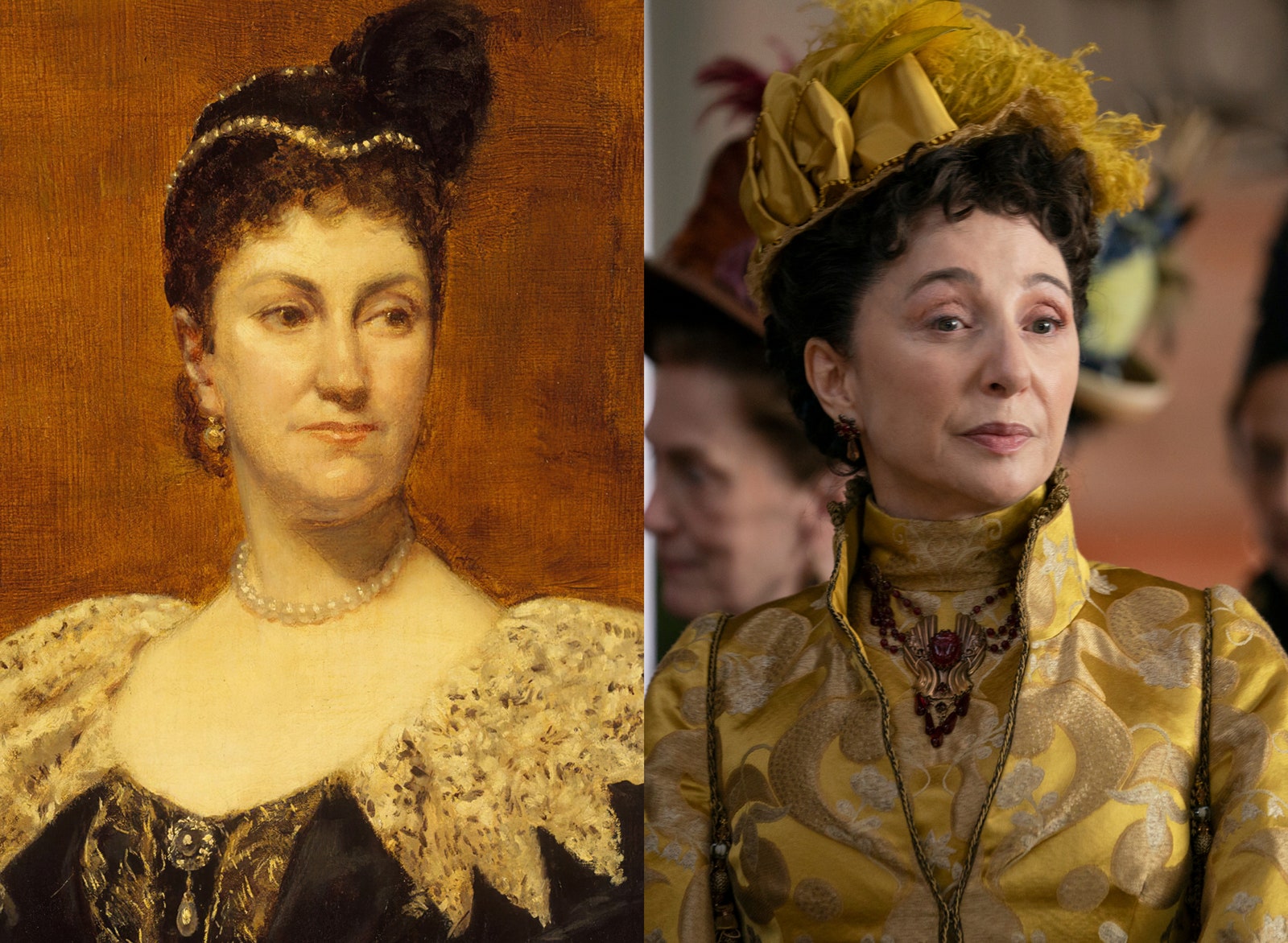
Julian Fellowes’s The Gilded Age chronicles the social lives—and melodramas—of the wealthy New York elite in the 1880s and 90s. Carrie Coon plays Mrs. Russell, a “nouveau riche” wife of a controversial railroad tycoon, who quickly learns that social currency cannot be bought with real currency. Then there’s Donna Murphy’s Mrs. Astor, the de facto ring leader of the city’s elite, who surrounds herself with a curated crowd. Finally, Nathan Lane is Ward McAllister, a haughty Southern gentleman who fancies himself as a cultural man about town. The HBO show is a grand, guilty pleasure—that, like any good historical fiction, very much borrows from reality.
In fact, all three characters listed above are based off of (or, at the very least, bear a striking similarity to) real-life people of that time period. Wondering who’s who? A breakdown of The Gilded Age characters and their real-life counterparts, below.
Caroline Schermerhorn Astor
Julian Fellowes doesn’t mask the true identity of Donna Murphy’s character in The Gilded Age: Mrs. Astor was, indeed, a real person, and the queen bee of New York society. Although other women had the same family name, there was only one who was considered the Mrs. Astor: Caroline Schermerhorn. Frank Crowninshield, a Vogue society writer who knew Mrs. Astor, described her power as “absolute” and “long continued” in a 1941 issue.
Coming from an old “Knickerbocker family”—or, the descendants of the wealthy Dutch class that settled New York—Caroline Schermerhorn married William Backhouse Astor, whose grandfather had amassed a fortune through fur trading and real estate. Her husband’s extreme wealth, combined with her social pedigree allowed her to reach, and remain, at the top of the upper echelon.
And Mrs. Astor was set in her ways: “Her taste was always for old families, old ways, old servants, old operas, old lace, and old friends. She tried always to keep society in bounds, to see that it was decorous, elegant, and select,” wrote Crowninshield. “Certainly, no subsequent period, or group of fashionable people, in American life has been so decorous or so admirably kept in hand.” Together with Ward McAllister, she developed Mrs. Astor’s 400—or, the 400 New York families that were socially acceptable. (400, by the way, was the number of people who could fit in Mrs. Astor’s ballroom.) In 1892, the list was even published by The New York Times.



